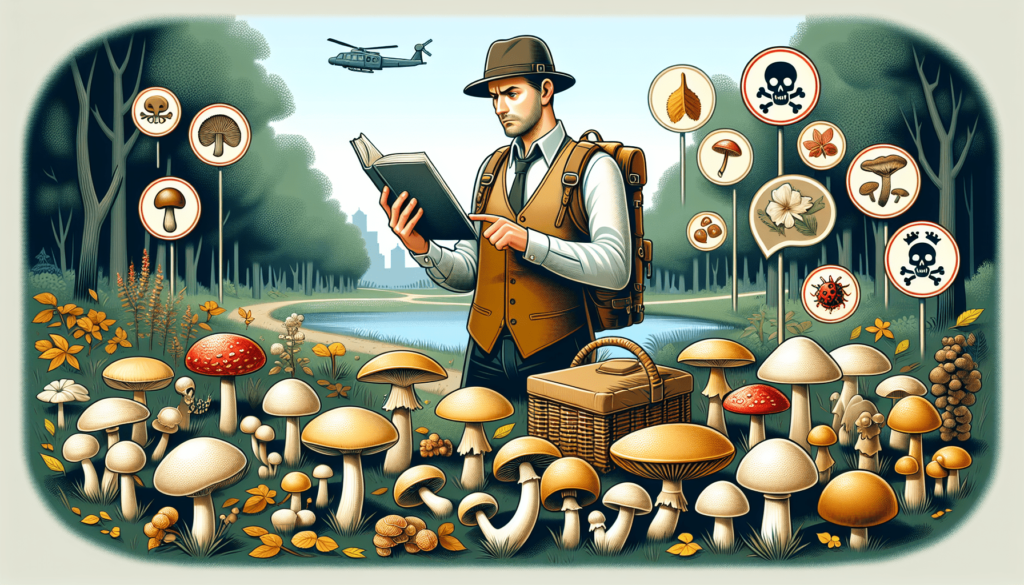Imagine strolling through a picturesque park, a gentle breeze rustling the leaves, when suddenly, you come across a strange mushroom nestled among the grass. Your curiosity piqued, you find yourself asking, “Can I eat a mushroom I found at the park?” It’s a question that has likely crossed the minds of many nature enthusiasts and foragers. In this article, we will explore the ins and outs of consuming wild mushrooms, unraveling the mysteries surrounding their edibility and ensuring your safety as you embark on a potential culinary adventure.
Identification
Understanding mushroom taxonomy
Before you consider consuming a mushroom found at the park, it is crucial to understand mushroom taxonomy. Mushrooms belong to the fungi kingdom and can be classified into different families, genera, and species. Each mushroom species has unique physical characteristics, such as color, cap shape, gills, and stalk. By familiarizing yourself with the different families and genera, you can better identify mushrooms in the wild.
Identifying edible mushrooms
Identifying edible mushrooms can be a challenging task, especially for novice foragers. However, with practice and proper knowledge, you can develop the skills to differentiate edible mushrooms from their toxic counterparts. Look out for distinguishing features such as the presence of a veil, the presence of a ring or volva on the stalk, and the color and texture of the cap and gills. It is advisable to focus on identifying a few easily recognizable edible mushrooms initially, such as morels, oyster mushrooms, or chanterelles.
Consulting field guides or experts
If you are unsure about the identification of a mushroom, it is always wise to consult reliable field guides or seek the guidance of experts. Field guides provide detailed descriptions, photographs, and drawings of various mushrooms, making it easier for beginners to identify different species. Additionally, you can reach out to mycologists or experienced foragers who possess extensive knowledge about mushroom identification. Their expertise can help you avoid potential risks and find safe and delicious culinary treasures.
Risks and Safety
Potential dangers of consuming wild mushrooms
While mushrooms can offer delectable flavors and unique culinary experiences, consuming the wrong mushroom can have severe consequences. Some wild mushrooms are highly toxic and can cause serious illness, organ failure, or even death. It is crucial to understand that not all mushrooms are safe for consumption, and even experienced foragers exercise caution when identifying and consuming wild mushrooms.
Differentiating toxic and non-toxic mushrooms
Differentiating toxic and non-toxic mushrooms can be a daunting task, as some toxic mushrooms closely resemble edible counterparts. Certain indicators, such as the presence of a fruity or almond-like odor, slimy caps, or abnormal coloration, may signal toxicity. However, it is vital to remember that many factors can influence a mushroom’s toxicity, and relying solely on visual cues is not foolproof. Always err on the side of caution and seek confirmation from experts before consuming any wild mushroom.
Medical consequences of mushroom poisoning
Mushroom poisoning can lead to a range of medical consequences, varying from mild gastrointestinal discomfort to severe organ failure. Symptoms of mushroom poisoning can include nausea, vomiting, stomach cramps, diarrhea, dizziness, hallucinations, liver damage, kidney failure, or even death. If you or someone you know exhibits any symptoms after consuming a wild mushroom, seek immediate medical attention and bring a sample of the mushroom for identification, if possible.
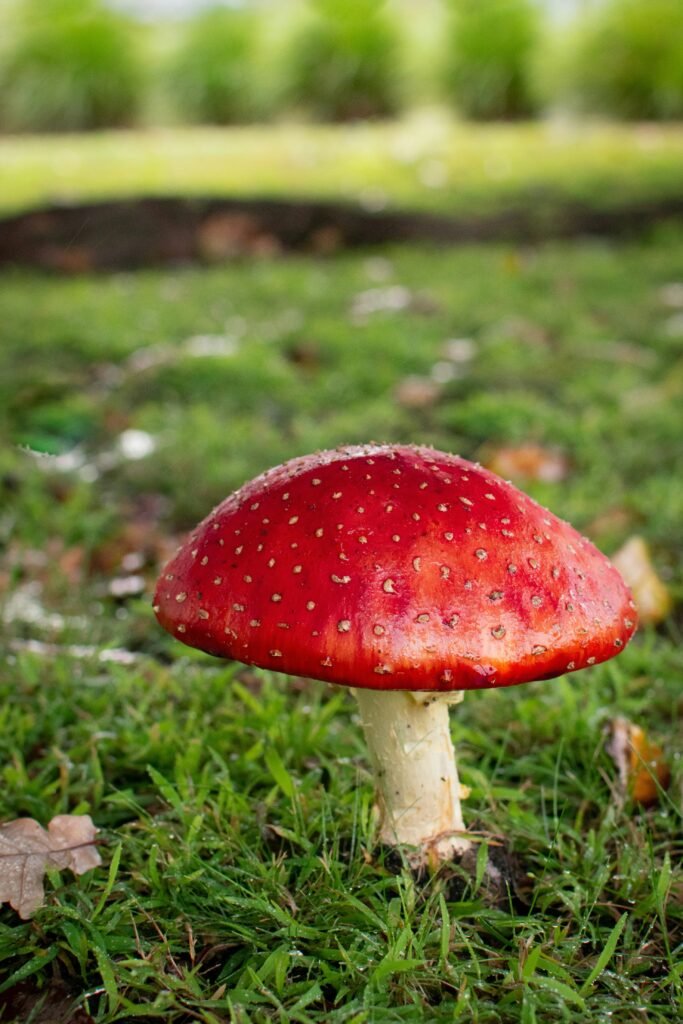
Legal Considerations
Local laws and regulations on foraging
Before collecting mushrooms from public parks or any other natural areas, it is essential to understand the local laws and regulations regarding foraging. Some areas may have specific restrictions, permits, or seasons for collecting wild mushrooms. Familiarize yourself with the local foraging regulations to ensure you are in compliance with the law and to preserve the natural ecosystem.
Permission for gathering mushrooms in public parks
In many cases, gathering mushrooms in public parks may require permission from the relevant authorities. Public parks often have rules in place to protect the environment and maintain a balance between foraging and ecological preservation. Check with the park administration or consult park guides to determine if mushroom collection is permitted, and adhere to any guidelines or restrictions they provide.
Penalties for unauthorized foraging
Unauthorized foraging can have legal consequences, including fines, penalties, or even legal charges. To avoid getting into trouble with the law, always ensure you have the necessary permissions and follow the established rules. Respect the natural environment and engage in responsible foraging practices to minimize any potential negative impacts.
Expert Advice
Seeking guidance from mycologists or experienced foragers
When it comes to foraging for mushrooms, seeking guidance from mycologists or experienced foragers is invaluable. These experts possess in-depth knowledge and experience in mushroom identification, edibility, and safety. They can offer advice on where and when to forage, teach you how to correctly identify mushrooms, and share tips on safe harvesting methods. Reach out to local mycology societies or attend foraging workshops where you can learn directly from knowledgeable individuals.
Joining foraging groups or workshops
Joining foraging groups or workshops can be an excellent way to learn from experienced individuals and expand your knowledge. These communities provide a platform for enthusiasts to share valuable insights, discuss best practices, and organize group forays. Not only do these groups foster a supportive environment, but they also facilitate greater confidence in identifying and preparing wild mushrooms.
Learning from reputable online sources
In addition to seeking guidance from experts and joining local communities, you can also learn from reputable online sources. Numerous websites, forums, and blogs curated by experienced foragers, mycologists, and culinary experts provide comprehensive information on mushroom identification, edibility, and cooking methods. However, exercise caution and cross-reference information from multiple reliable sources before relying on any online advice.
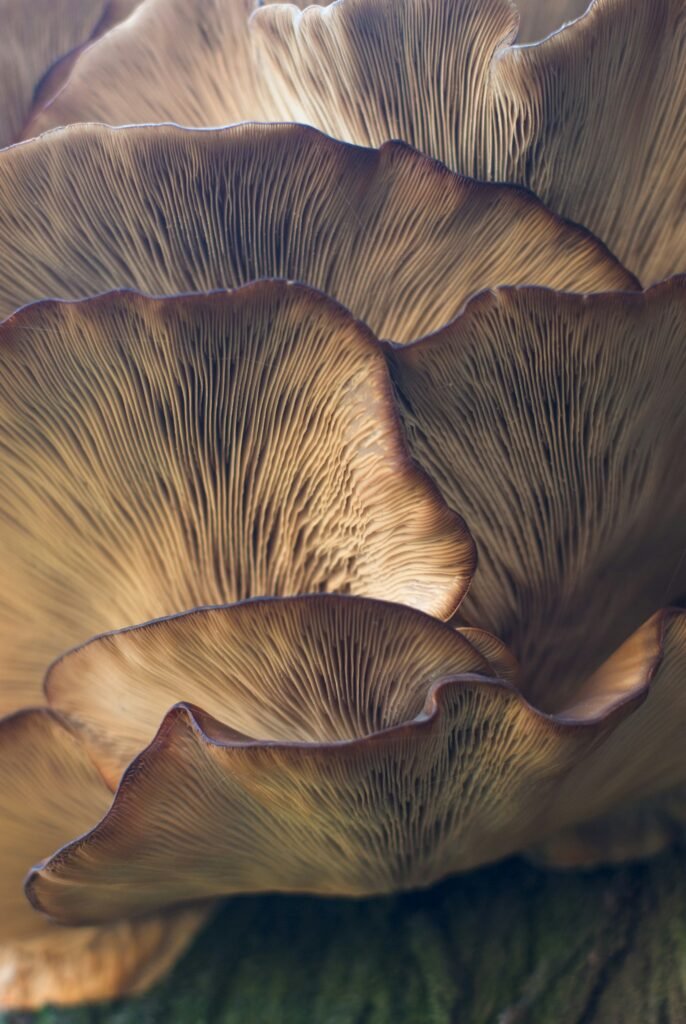
Edibility Testing
Performing a spore print
Performing a spore print is a helpful technique to determine a mushroom’s identification and potential edibility. To conduct a spore print, cut the cap from the stem of the mushroom and place it, gills facing down, on a piece of paper or glass. Cover it with a bowl or container to maintain humidity, and leave it undisturbed for several hours or overnight. The spores will drop onto the paper, revealing their color, which aids in identifying the mushroom species.
Applying the elimination process
The elimination process involves ruling out potentially toxic mushrooms based on specific characteristics. By researching and learning about poisonous mushrooms in your region, you can eliminate those species from consideration when foraging. Focus on positively identifying edible mushrooms rather than attempting to memorize all toxic species to reduce the risk of consuming dangerous varieties accidentally.
Testing for edibility with caution
While edibility testing is an option, it is strongly advised to exercise extreme caution. Consuming a small portion of a mushroom and observing any adverse reactions over a period of several days can help determine its edibility. However, this method should only be used by experienced foragers who are confident in their identification skills. It is paramount to start with a minimal portion and wait for symptoms such as nausea, upset stomach, or any other adverse effects. If any discomfort occurs, immediately seek medical attention.
Health Conditions
Considerations for individuals with allergies
Individuals with allergies should exercise caution when consuming wild mushrooms. Some people may have allergies to specific mushrooms, resulting in mild to severe allergic reactions. If you have known allergies or are uncertain, it is advisable to avoid consuming wild mushrooms altogether and consult with a medical professional to determine if it is safe to do so.
Impact of underlying health conditions
Underlying health conditions can increase the risks associated with consuming wild mushrooms. Certain health conditions, such as compromised immune systems, liver or kidney diseases, or autoimmune disorders, can make individuals more susceptible to adverse effects from mushroom consumption. It is crucial to consult with a healthcare professional before attempting to consume wild mushrooms, especially if you have any pre-existing health conditions.
Risks for pregnant or breastfeeding women
Pregnant or breastfeeding women should exercise caution when considering consuming wild mushrooms. While many edible mushrooms are safe during pregnancy and lactation, there is limited research on the effects of consuming a wide variety of wild mushrooms. To ensure the health and safety of both mother and child, it is best to consult with a healthcare professional before consuming any wild mushrooms during this period.
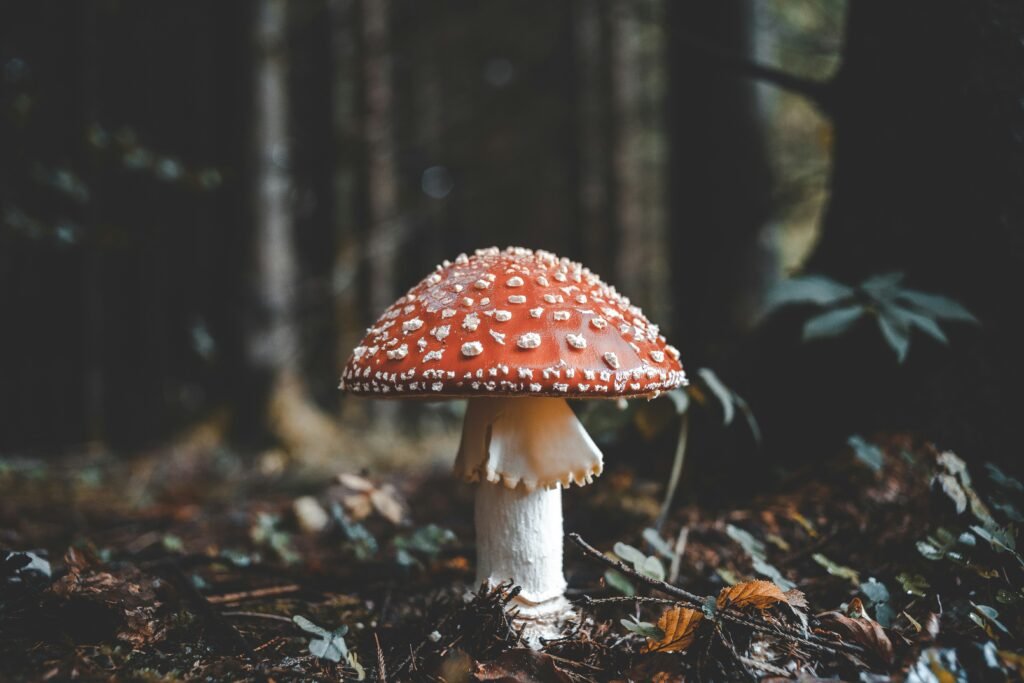
Environmental Factors
Contaminants in urban or polluted areas
Mushrooms have a unique ability to absorb contaminants from their surrounding environment. If you are foraging in urban areas or polluted regions, there is a higher risk of wild mushrooms containing harmful substances. Urban areas may contain pollutants from vehicle emissions, industrial activities, or chemical applications. Therefore, it is best to avoid foraging for mushrooms in such areas to minimize potential health risks.
Absorbing heavy metals or pollutants
Mushrooms have an astonishing ability to absorb heavy metals, pollutants, and chemicals from the soil and surrounding ecosystem. While this makes them efficient bioaccumulators, it also increases the risk of contamination in some regions. Avoid foraging mushrooms in areas with known historical contamination or where pollutants are often present, such as near industrial sites, landfills, or heavily trafficked roads.
Effects of pesticides or herbicides
Pesticides and herbicides used in agricultural or landscaping practices can find their way into the environment, potentially affecting mushrooms. Wild mushrooms growing in pesticide-treated areas carry an increased risk of contamination. To ensure your safety and the quality of the mushrooms you consume, avoid foraging in areas where chemical applications are prevalent, including agricultural fields, golf courses, or parks where herbicides are commonly used.
Cooking Preparation
Cleaning and washing wild mushrooms properly
Properly cleaning and washing wild mushrooms is vital to remove any dirt, insects, or residual contaminants. Avoid soaking mushrooms in water, as they are porous and can absorb moisture. Instead, gently brush off any visible debris with a soft brush or cloth. If necessary, use a damp cloth or paper towel to wipe away stubborn dirt. Remember, it is essential to maintain the mushroom’s natural flavors, so minimal handling and cleaning are recommended.
Cooking methods to ensure safety
cooking wild mushrooms thoroughly is crucial to eliminate any potential contaminants, toxins, or parasites. Heat breaks down harmful substances and renders many wild mushrooms safe for consumption. Sauteeing, grilling, or baking mushrooms at a high temperature can neutralize toxins. Boiling mushrooms in water, then discarding the water, is another option for safer consumption. Avoid consuming wild mushrooms raw, as this increases the risk of consuming harmful pathogens or toxins.
Potential risks of consuming undercooked mushrooms
Consuming undercooked mushrooms poses potential health risks, as heat is necessary to destroy harmful bacteria, parasites, or toxins. Eating undercooked or raw wild mushrooms can lead to gastrointestinal discomfort, food poisoning, or other adverse health effects. It is crucial to ensure that mushrooms are cooked thoroughly to minimize any potential risks associated with consuming them.
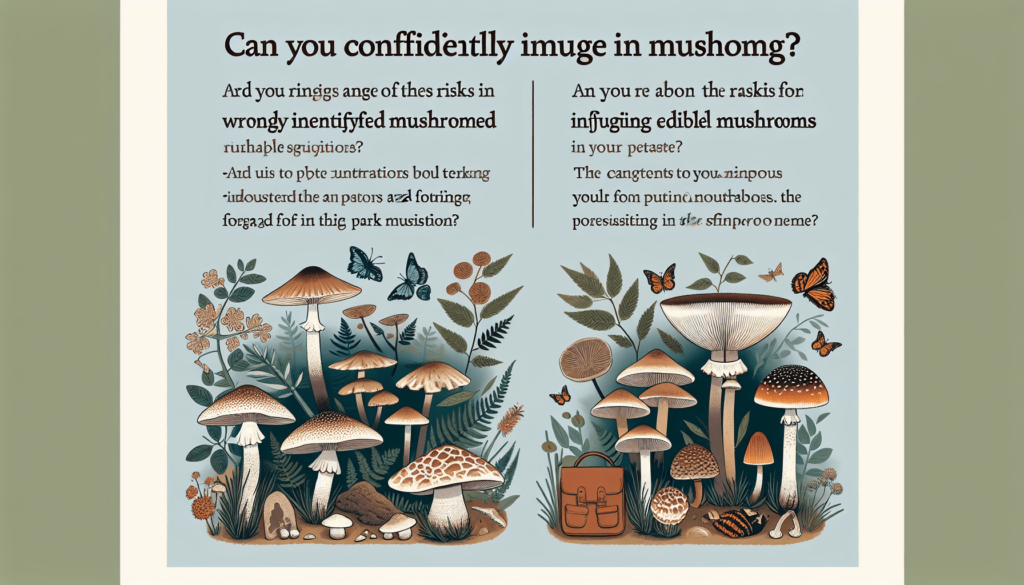
Personal Responsibility
Being cautious and responsible
Foraging for wild mushrooms is an exciting and rewarding experience but requires cautious and responsible behavior. Always approach mushroom foraging with a sense of responsibility and adhere to ethical and legal guidelines. Take the time to research and learn about the mushrooms in your area, develop identification skills, and minimize the impact on the environment.
Understanding the consequences
Understanding the consequences of consuming wild mushrooms without proper knowledge or expertise is vital. Lack of awareness or misidentification can result in serious illness or even death. Recognize the importance of being knowledgeable, cautious, and responsible when it comes to mushroom foraging.
Considering alternative sources of safe mushrooms
If you are uncertain about the identification or safety of wild mushrooms, consider exploring alternative sources of safe mushrooms. Local farmers’ markets, grocery stores, or specialty shops often provide a wide variety of cultivated mushrooms that are reliably identified, safe for consumption, and delicious. Additionally, cultivating your own mushrooms at home can be a rewarding and safe way to enjoy these culinary delights.
Conclusion
The importance of knowledge and caution
When it comes to foraging for wild mushrooms, knowledge and caution are essential. Understanding mushroom taxonomy, identifying edible mushrooms, and consulting experts are essential steps to ensure your safety and enjoyment. By continuously expanding your knowledge and skills, you can become a responsible and confident mushroom forager.
Making informed decisions about wild mushrooms
Making informed decisions about wild mushrooms involves thorough research, learning from experts, and applying cautionary measures. Do not take unnecessary risks or consume mushrooms without properly identifying them. It is always better to err on the side of caution and seek professional guidance if in doubt.
Seeking expert guidance when uncertain
When in doubt, always seek the guidance of experts before consuming any wild mushrooms. Mycologists, experienced foragers, and trusted online sources can help you identify mushrooms accurately and provide invaluable advice on their edibility and preparation. Remember, it is better to be safe than sorry when it comes to enjoying the delights of foraging for wild mushrooms.
